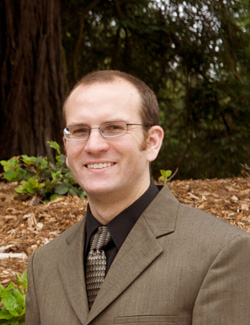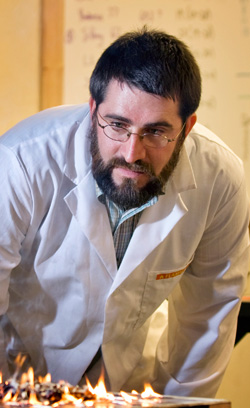
HSU’s mathematical model of smoldering duff—decaying leaves and branches—will help establish how floor moisture influences the temperature and duration of smoldering and combustion, and hence forest fire behavior.
“We’ll measure physical properties on the forest floor on a small scale and then feed the numbers into the mathematical model to make predictions about how the fire would spread across a larger region,” Dugaw said. “We will then test the model by comparing its predictions to larger-scale field burns.”

To date, said Dugaw, the lack of such a model has been a major obstacle to the restoration and management of fire-prone ecosystems. The forest floor consists of diverse strata and that fact complicates modeling. Each level has a different moisture content, making it hard to predict how smoldering will spread and whether it will ignite.
“We’ll study smoldering ground fires, which occur after a flaming forest fire passes through a region and ignites the top layer of soil, which smolders like a cigarette,” Dugaw explained. “These fires are important because they can kill trees and play an important part in post-fire erosion. Soil moisture is a main focus of our model because it has a major impact on the intensity and scale of ground fires.”

Dugaw and his co-principal investigator, J. Morgan Varner, HSU forestry professor and fire ecology expert, will base the model on field research and laboratory experiments over the three-year period of the grant, awarded by the Joint Fire Science Program. It was created by Congress in 1998 as an interagency research, development, and applications partnership between the Departments of Interior and Agriculture. Field work under the grant will begin in September.
Dugaw and Varner will conduct field research in the mixed conifer Stanislaus-Tuolomne Experimental Forest in central California. In addition, measurements of peat and two types of forest duff, mixed conifer and pine, will be taken in northern Florida. Co-principal investigator J. Kevin Hiers, a prescribed fire program manager at Eglin Air Force Base, Niceville, FL, will organize and monitor field burns. He is a fire ecologist and conservation biologist.
Varner, using Humboldt State’s state-of-the-art fire lab, one of only three nationwide, will probe the effects of varying moisture on such factors as the probability of ignition of peat and duff.